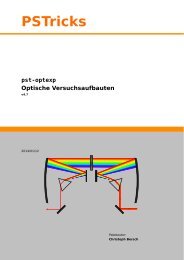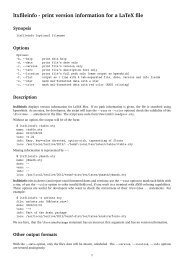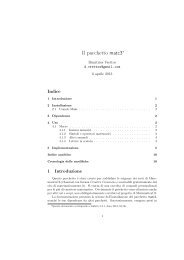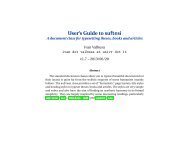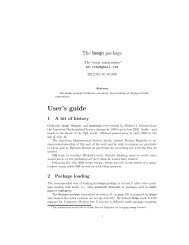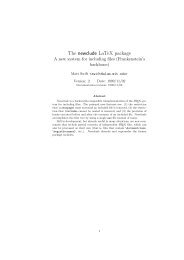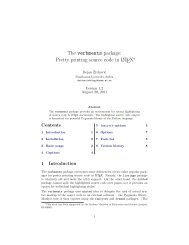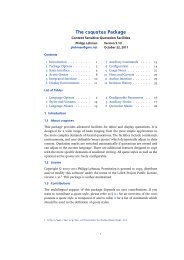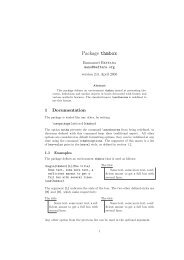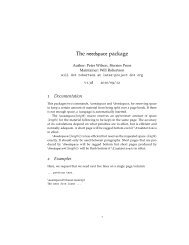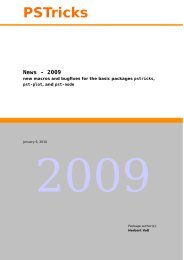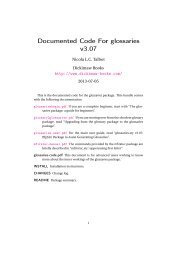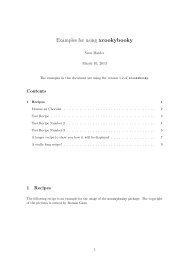Create successful ePaper yourself
Turn your PDF publications into a flip-book with our unique Google optimized e-Paper software.
• The major version is the integer result of \luatexversion divided by 100. The primitive is an<br />
‘internal variable', so you may need to prefix its use with \the depending on the context.<br />
• The minor version is the two-digit result of \luatexversion modulo 100.<br />
• The revision is the given by \luatexrevision. This primitive expands to a positive integer.<br />
• The full version number consists of the major version, minor version and revision, separated by dots.<br />
Note that the \luatexdatestamp depends on both the compilation time and compilation place of the<br />
current executable; it is defined in terms of the local time. The purpose of this primitive is solely to be<br />
an aid in the development process, do not use it for anything besides debugging.<br />
2.3 UNICODE text support<br />
Text input and output is now considered to be Unicode text, so input characters can use the full range<br />
of Unicode (2 20 + 2 16 − 1 = 0x10FFFF).<br />
Later chapters will talk of characters and glyphs. Although these are not interchangeable, they are<br />
closely related. During typesetting, a character is always converted to a suitable graphic representation<br />
of that character in a specific font. However, while processing a list of to-be-typeset nodes, its contents<br />
may still be seen as a character. Inside LuaTEX there is not yet a clear separation between the two<br />
concepts. Until this is implemented, please do not be too harsh on us if we make errors in the usage of<br />
the terms.<br />
A few primitives are affected by this, all in a similar fashion: each of them has to accommodate for a<br />
larger range of acceptable numbers. For instance, \char now accepts values between 0 and 1,114,111.<br />
This should not be a problem for well-behaved input files, but it could create incompatibilities for input<br />
that would have generated an error when processed by older TEX-based engines. The affected commands<br />
with an altered initial (left of the equals sign) or secondary (right of the equals sign) value are: \char,<br />
\lccode,\uccode, \catcode, \sfcode, \efcode, \lpcode, \rpcode, \chardef.<br />
As far as the core engine is concerned, all input and output to text files is utf-8 encoded. Input files can<br />
be pre-processed using the reader callback. This will be explained in a later chapter.<br />
Output in byte-sized chunks can be achieved by using characters just outside of the valid Unicode range,<br />
starting at the value 1,114,112 (0x110000). When the time comes to print a character c> = 1,114,112,<br />
LuaTEX will actually print the single byte corresponding to c minus 1,114,112.<br />
Output to the terminal uses ^^ notation for the lower control range (c < 32), with the exception of ^^I,<br />
^^J and ^^M. These are considered ‘safe' and therefore printed as-is.<br />
Normalization of the Unicode input can be handled by a macro package during callback processing (this<br />
will be explained in section 4.1.2).<br />
2.4 Extended tables<br />
All traditional TEX and ε-TEX registers can be 16-bit numbers as in Aleph. The affected commands are:<br />
14<br />
Basic TEX enhancements



